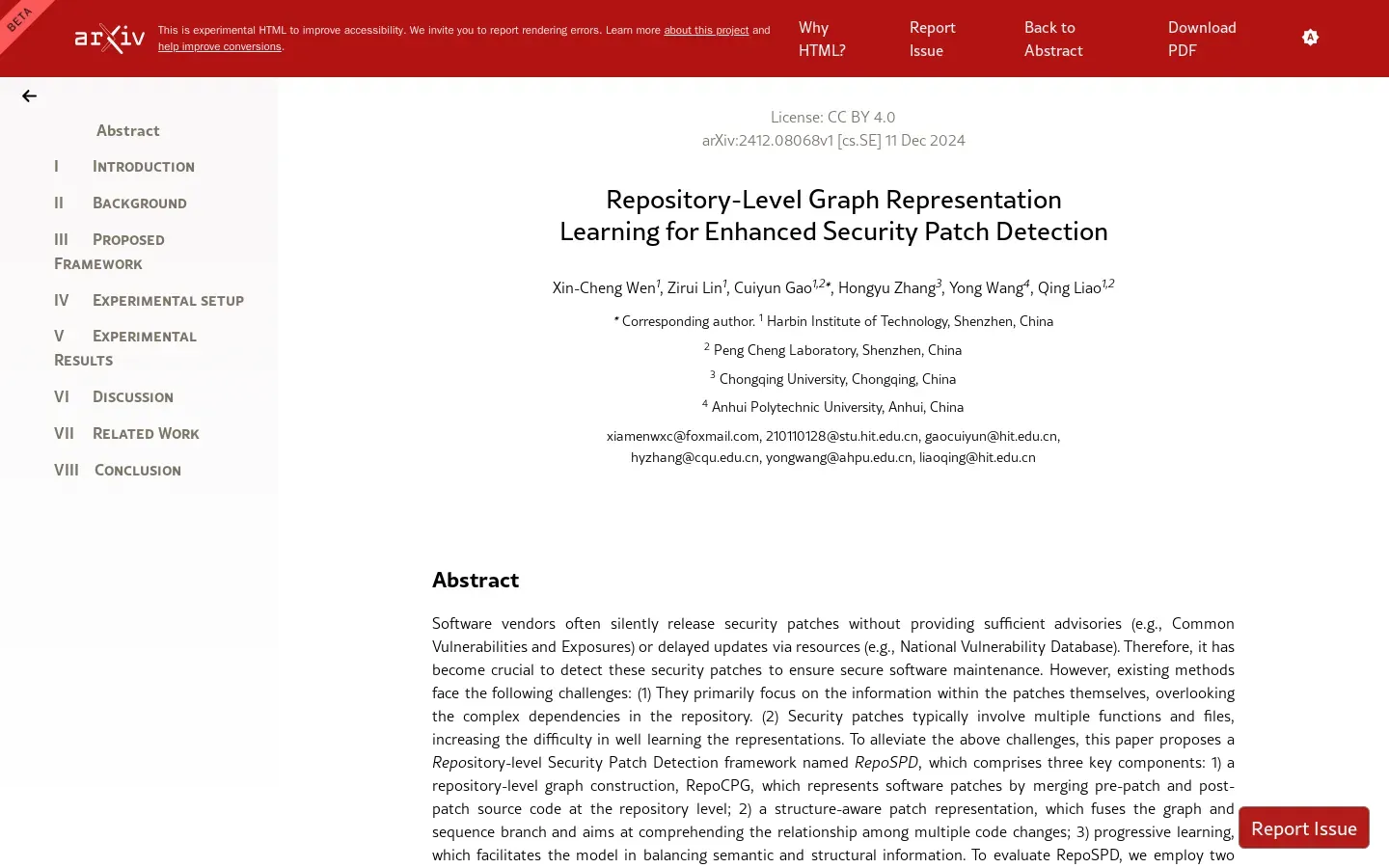
RepoSPD Framework Introduced for Security Patch Detection
/ 3 min read
Quick take - Researchers have developed the Repository-level Security Patch Detection framework (RepoSPD) to improve the detection of security patches in software repositories, utilizing advanced methodologies such as Graph Neural Networks and progressive learning techniques to enhance software security maintenance practices.
Fast Facts
-
RepoSPD Framework: A new framework developed to enhance security patch detection in software repositories, focusing on four key components: Repository-level Graph Construction, Structure-aware Patch Representation, Progressive Learning, and Evaluation and Dataset Extension.
-
Advanced Methodologies: Utilizes Graph Neural Networks (GNNs) and progressive learning techniques to improve the accuracy and efficiency of vulnerability detection in software.
-
Strengths and Limitations: While RepoSPD significantly enhances patch detection capabilities, challenges remain regarding its scalability and adaptability to diverse software environments.
-
Recommended Tools: Key tools for implementing RepoSPD include the framework itself, GNNs for data representation, and progressive learning for incremental adaptation.
-
Future Directions: Proposed integrations include embedding RepoSPD in CI/CD pipelines, real-time vulnerability monitoring, cross-repository analysis, and enhancing developer education on security practices.
Innovations in Software Security: The RepoSPD Framework
In a notable stride for cybersecurity, researchers have unveiled the Repository-level Security Patch Detection framework (RepoSPD), designed to revolutionize the detection of security patches within software repositories. This development addresses the intricate challenges of security patch detection, promising to refine software security maintenance practices significantly.
Overview of RepoSPD
The RepoSPD framework is underpinned by four primary objectives: Repository-level Graph Construction (RepoCPG), Structure-aware Patch Representation, Progressive Learning, and Evaluation and Dataset Extension. These components collectively offer a comprehensive strategy for identifying vulnerabilities and security patches across diverse software repositories.
Key Findings
Research indicates that RepoSPD offers a robust solution for enhancing software security through effective patch detection. By leveraging advanced methodologies such as Graph Neural Networks (GNNs) and progressive learning techniques, the framework improves the accuracy and efficiency of vulnerability detection. These findings hold significant implications for both practical applications and theoretical advancements in cybersecurity, suggesting that integrating such frameworks can lead to more secure software development practices.
Strengths and Limitations
The strengths of the RepoSPD research lie in its innovative use of graph-based representations and learning methodologies, which substantially enhance the detection capabilities of security patches. However, limitations are present, particularly regarding the scalability of the framework and its adaptability to various software environments. Future research is encouraged to explore these areas further, aiming to broaden the framework’s applicability across a wider range of use cases.
Recommended Tools and Techniques
The research highlights several tools and techniques essential for implementing RepoSPD:
- RepoSPD Framework: Central to the patch detection process.
- Graph Neural Networks (GNNs): Employed for their powerful data representation capabilities.
- Progressive Learning: Improves the model’s ability to adapt and learn incrementally from new data.
These tools collectively enhance the overall effectiveness of security patch detection in software repositories.
Future Directions
To maximize the utility of the RepoSPD framework in real-world cybersecurity scenarios, several integration directions have been proposed:
- Integration with CI/CD Pipelines: Embedding security patch detection within the software development lifecycle.
- Real-time Vulnerability Monitoring and Alerting Systems: Enabling immediate responses to newly identified vulnerabilities.
- Cross-Repository Vulnerability Analysis: Facilitating comprehensive assessments across multiple repositories to identify shared vulnerabilities.
- Enhanced User Education and Awareness Tools: Providing developers with essential knowledge to implement effective security practices.
By pursuing these directions, the RepoSPD framework has the potential to significantly bolster the security posture of software development, leading to safer applications and systems globally. The ongoing research and development in this area underscore a commitment to advancing cybersecurity and addressing the ever-evolving challenges posed by software vulnerabilities.



